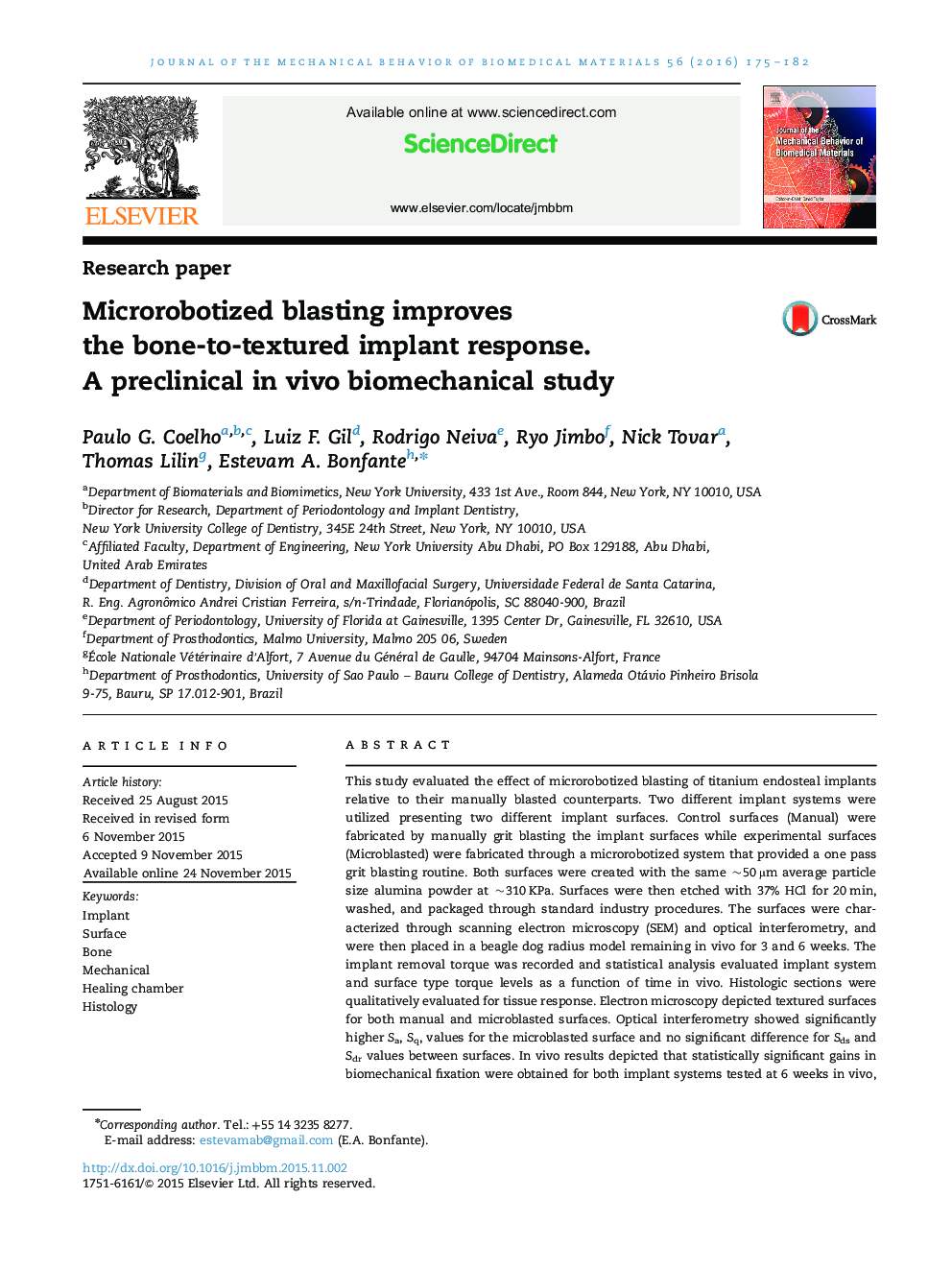| کد مقاله | کد نشریه | سال انتشار | مقاله انگلیسی | نسخه تمام متن |
|---|---|---|---|---|
| 810534 | 1469089 | 2016 | 8 صفحه PDF | دانلود رایگان |

• Implant surface by manual or microrobotized blasting with alumina was evaluated.
• Manual blasting produced a smooth surface and microrobotized a minimally rough (Sa).
• Alumina particles was found in implant surfaces after manual blasting only.
• Biomechanical fixation rate over time was higher for microrobotized blasted surface.
This study evaluated the effect of microrobotized blasting of titanium endosteal implants relative to their manually blasted counterparts. Two different implant systems were utilized presenting two different implant surfaces. Control surfaces (Manual) were fabricated by manually grit blasting the implant surfaces while experimental surfaces (Microblasted) were fabricated through a microrobotized system that provided a one pass grit blasting routine. Both surfaces were created with the same ~50 µm average particle size alumina powder at ~310 KPa. Surfaces were then etched with 37% HCl for 20 min, washed, and packaged through standard industry procedures. The surfaces were characterized through scanning electron microscopy (SEM) and optical interferometry, and were then placed in a beagle dog radius model remaining in vivo for 3 and 6 weeks. The implant removal torque was recorded and statistical analysis evaluated implant system and surface type torque levels as a function of time in vivo. Histologic sections were qualitatively evaluated for tissue response. Electron microscopy depicted textured surfaces for both manual and microblasted surfaces. Optical interferometry showed significantly higher Sa, Sq, values for the microblasted surface and no significant difference for Sds and Sdr values between surfaces. In vivo results depicted that statistically significant gains in biomechanical fixation were obtained for both implant systems tested at 6 weeks in vivo, while only one system presented significant biomechanical gain at 3 weeks. Histologic sections showed qualitative higher amounts of new bone forming around microblasted implants relative to the manually blasted group. Microrobotized blasting resulted in higher biomechanical fixation of endosteal dental implants and should be considered as an alternative for impant surface manufacturing.
Figure optionsDownload high-quality image (90 K)Download as PowerPoint slide
Journal: Journal of the Mechanical Behavior of Biomedical Materials - Volume 56, March 2016, Pages 175–182